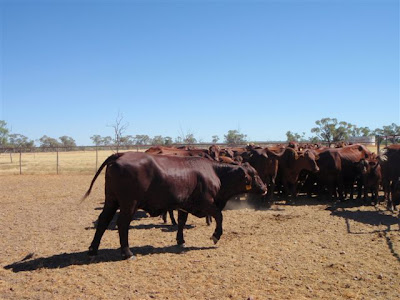G day Mate!
“A typical day in the life of a GA pilot & crew in the outback of a Flying Australia Safari.”
Breakfast at 7:00 AM, not to much coffee, we were warned some days flying time could be 4 hours. Then off to the pilot briefing (work, work, work). The briefing usually takes place by the pool or outside in the clear desert air. Our lead pilot Ray will review the routes, the altitudes & the day’s weather. We will also go over the radio frequencies, ERSA (flight supplement) & any points of interest along the route. A typical flying day back home we go from place to place to get there quickly, here we go from waypoint to waypoint to see the country. Speed is not that important. At 8:30 – 9:00 AM we are off to the airport. Once at the airport, we complete our walk around, pre flight & fuel (work, work, work). Janice & I are off first in VH-TWB a 172 because it is the slowest aircraft. Then Marjie & Harold are next with VH-CEV a 172 SP. Last leaving is Addie, Ray & Clare with VH-JCU a 182 RG. Run up complete GPS set, maps ready, and wheels up around 9:30.
Once airborne, we report to Ray giving our position, altitude & time to next waypoint. We fly the airplane, enjoy the view & take photos. Approaching our destination we review our airport diagram, overfly the airport, check the winds & attempt a beautiful landing. Secure the airplane, unload bags & wait for pickup. To the hotel we go, Clare checks us in, hands us all our keys, we throw our bags in our rooms.
Marjie has acquired a taste for the local beer “cascade light” & her pucker factor reaches an 8 until she has one, so off to the pub we go first thing. Now we know why the Aussies love their beer, it is a matter of SURVIVAL! The temp varies between 35 & 40 degrees.
Janice’s pucker factor also reaches an 8 until she has an afternoon nap so she will disappear for a few hours.
Our fearless leader Clare keeps us all organized, we follow him closely, & try no to be cheeky (some have to try harder than others). There may be an activity booked for the afternoon, a town tour, museum, afternoon at the pool, star gazing or a sunset dinner in the desert. The next day we will have activities to choose, camel rides at sunrise, flying Doctors, shopping (yes we have massaged our credit cards & helped out the Australian economy), opal mines, hiking, didgeridoo lessons & show (which was outstanding) & much more.
We all meet for supper around 7:00 pm, & have tried Camel, Emu & Kangaroo, each having their own distinctive taste, very well prepared, proportions way to large. Our shitters are expanding daily. Our fearless leader Clare prepares us for the next day. We all focus on him with big round eyes & listen with anticipation. What will we see & do tomorrow?
As you can see from our pilot’s we are having the time of our lives exploring Australia by air & land, meeting new mates, learning a new culture, seeing so many new places & things.
We usually stay 2 nights in one place & then fly the next. We sleep peacefully.
Back in a tick
Janice, Reg, Marjie, Harold, Addie, Clare, Ray
















